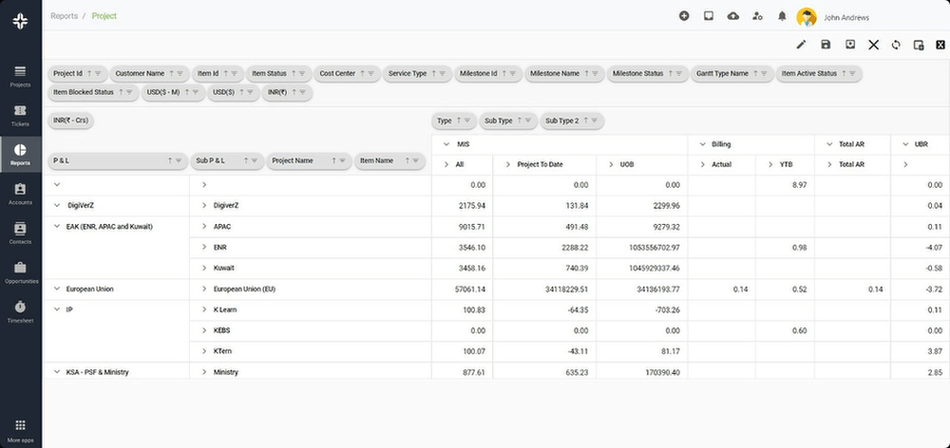Home » PSApedia
Project margin variance
Analyze Project Margin Variance Effectively for Informed Decision-Making.

What is Project Margin Variance?
Project Margin Variance (PMV) is a financial metric that measures the difference between the expected project margin and the actual project margin realized upon project completion.
It is a critical indicator of project financial health and a company’s ability to deliver services within the projected budget and profitability targets.
The Importance of Project Margin Variance
Understanding PMV is essential for businesses, especially those involved in project-based work like consulting, engineering, and IT services. Here’s why:
1. Budget Control: PMV helps in monitoring if projects are staying on budget.
2. Profitability Analysis: It indicates whether the projects are as profitable as planned.
3. Performance Measurement: PMV is a tool for assessing the efficiency of project management and execution.
4. Strategic Planning: Insights from PMV analysis can inform future project bids and planning.
In the realm of Professional Service Automation (PSA), PMV becomes even more significant as it can be tracked in real-time, allowing for prompt corrective actions.

The Importance of Project Margin Variance
Calculating Project Margin Variance
The formula for PMV is:
Project Margin Variance (PMV) = (Actual Margin – Expected Margin) / Expected Margin * 100
Example:
Suppose the expected margin for a project is $100,000, but the actual margin upon completion is $85,000. The PMV would be:
PMV = (($85,000 – $100,000) / $100,000) * 100 = -15%
This indicates a negative variance, meaning the project was less profitable than anticipated.
Project Margin Variance vs Other Financial Metrics
PMV is often confused with other financial metrics, but it has its unique place:
1. PMV vs Gross Margin: Gross margin measures total profitability, while PMV focuses on the variance from expected profitability for individual projects.
2. PMV vs Cost Variance: Cost variance looks at the difference between budgeted and actual costs, not taking into account the revenue aspect.
| Metric | Project Margin Variance | Gross Margin | Cost Variance |
|---|---|---|---|
| Focus | Variance from expected project profitability | Total profitability from sales | Difference between budgeted and actual project costs |
| Importance | Project-specific financial health | Overall company profitability | Cost control on projects |
| Calculation | (Actual Margin – Expected Margin) / Expected Margin * 100 | (Revenue – Cost of Goods Sold) / Revenue * 100 | (Budgeted Cost – Actual Cost) / Budgeted Cost * 100 |
Application of Project Margin Variance in Business
PMV is utilized in various ways:
1. Project Evaluation: It helps in evaluating the financial success of projects post-completion.
2. Forecasting: PMV trends can improve the accuracy of future project margin forecasts.
3. Resource Allocation: Insights from PMV can guide where to allocate resources for better profitability.
4. Client Billing: PMV can influence how services are priced and how contracts are negotiated.
For businesses using PSA software, PMV can be tracked alongside other project metrics for comprehensive financial management.
Ready to Optimize Your Project Margin Variance?
KEBS, a robust PSA software, provides tools to help businesses manage and improve their PMV. With KEBS, companies can monitor PMV in real-time, allowing for immediate adjustments. KEBS features enable detailed tracking of project financials, from budgeting to final margin analysis. Tailored reports in KEBS can highlight PMV trends and variances, aiding in decision-making.
KEBS integrates with other financial tools to ensure that all data contributing to PMV is accurate and up-to-date.

KEBS Project Management
Ready to optimize your Project Margin Variance? Contact us today or request a demo to see how KEBS can transform your project financial management.



